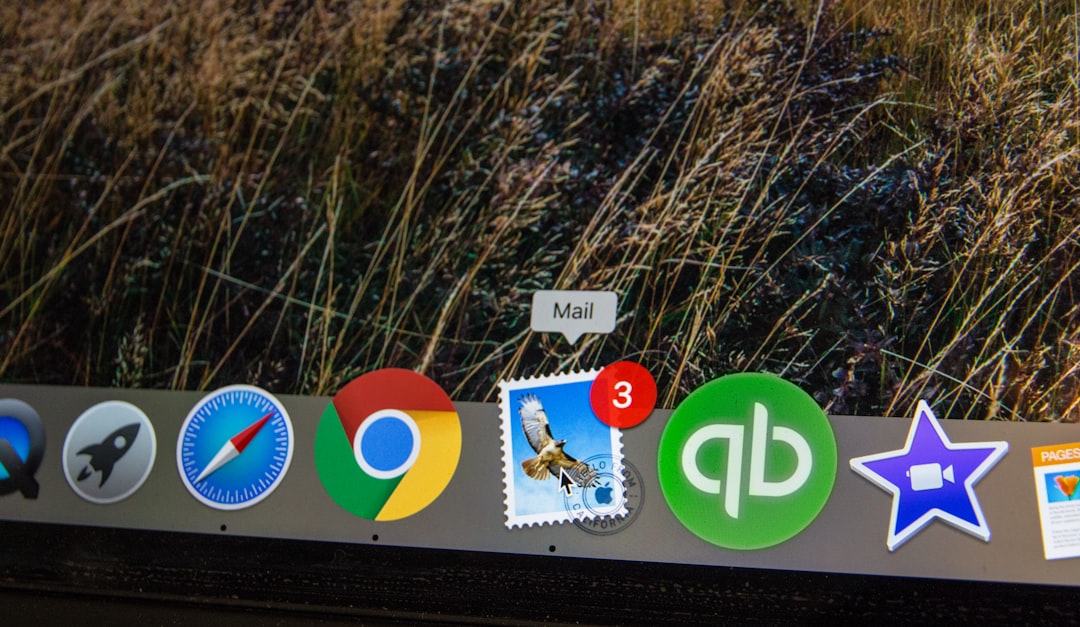Table of Contents
- Introduction
- Understanding the importance of user segmentation
- Identifying key segments within your audience
- Utilizing data to segment users effectively
- Creating personalized offers for different segments
- Employing A/B testing to refine promotional strategies
- Leveraging technology for real-time segmentation
- Monitoring and analyzing the effectiveness of segmented offers
- Adapting strategies based on feedback and performance metrics
- Conclusion
- Frequently Asked Questions
Introduction
Imagine a magical key that could unlock the potential to electrify your sales, captivating customers with tailored offers they simply cannot resist. This is not just a fantasy—in the world of modern marketing, mastering user segmentation can open doors to this captivating reality! Why settle for a one-size-fits-all approach, when you can craft irresistible, personalized offers that speak directly to diverse consumer needs?
Prepare to embark on a journey where psychology meets data, empowering businesses to segment their audience with precision and deliver content that resonates. Dive deep into our article, and we’ll unveil how understanding customer preferences can transform your sales strategy, turning casual browsers into loyal advocates.
Consider the following illustration that encapsulates the power of effective user segmentation:
| Segment | Strategy | Result |
|---|---|---|
| Frequent Buyers | Exclusive Discounts | Increased Loyalty |
| First-time Visitors | Welcome Offers | Higher Conversion Rates |
| Abandoned Cart Users | Personalized Reminders | Reduced Cart Abandonment |
Are you ready to unleash the full potential of your marketing efforts? Discover the secret skills to skyrocket your sales as we delve into the art of making data-driven, impactful offers.
Understanding the importance of user segmentation
User segmentation is a cornerstone principle in modern marketing strategies, emphasizing the importance of dividing a user base into distinct groups based on various characteristics such as demographics, behaviors, and preferences. This segmentation allows businesses to tailor their marketing efforts and deliver personalized experiences, which are more effective in engaging customers and driving conversions.
Understanding the importance of user segmentation lies in its ability to create highly targeted marketing campaigns that resonate with specific audiences. By identifying and analyzing different user segments, businesses can pinpoint which groups are more likely to respond to certain promotions or offers. This not only boosts engagement rates but also optimizes marketing resources by focusing efforts on the most promising prospects.
Moreover, user segmentation enables companies to understand their customers better, fostering loyalty and long-term relationships. In today’s competitive market, personalization is key, and businesses that can anticipate and meet their customers’ needs are more likely to succeed. Through effective user segmentation, companies can enhance customer satisfaction and retention, ultimately securing a competitive edge.
Identifying key segments within your audience
Identifying key segments within your audience is a crucial step in effectively leveraging user segmentation for targeted promotions or offers. To start, understanding your customer base at a granular level is important. This involves gathering detailed data on user behavior, preferences, and demographics. Categories can include age, gender, location, purchasing behavior, and engagement levels. The use of analytics tools can aid in collecting and analyzing this data. These tools allow businesses to recognize trends and patterns that can be used to segment audiences effectively.
Once the data is gathered, creating well-defined segments is the next step. These segments should be based on tangible criteria that directly relate to your business goals. For instance, you might segment by purchasing frequency to identify loyal customers or by geographic location to customize offers for different regions.
After identifying the segments, it’s vital to continually test and refine them. This involves monitoring the success of promotions with different groups and adjusting strategies accordingly. Such a dynamic approach ensures that the segmentation remains relevant and effective, providing a competitive edge in customer engagement and conversion rates.
Utilizing data to segment users effectively
Utilizing data to segment users effectively involves gathering and analyzing various types of information about your customer base. This process starts with collecting demographic data such as age, gender, and location, which provides a basic framework for segmentation. However, to segment more precisely, you should also consider behavioral data, which includes purchasing habits, browsing history, and interaction with your brand’s content. This allows businesses to identify patterns and preferences, offering a deeper understanding of each segment’s needs and interests.
Advanced data analytics tools and Customer Relationship Management (CRM) systems can process large datasets to provide actionable insights. Leveraging these technologies can help in predicting future behaviors and identifying potential high-value customers. Moreover, psychographic data can further enhance segmentation by revealing users’ lifestyles, values, and personalities, which are crucial for tailoring promotions.
By leveraging these data-driven insights, businesses can create highly targeted promotions or offers that resonate with specific user segments. Personalized marketing strategies not only increase customer engagement but also enhance loyalty and conversion rates. Effective user segmentation can transform generic marketing campaigns into personalized experiences that align with the unique characteristics and needs of each customer group.
Creating personalized offers for different segments
Creating personalized offers for different segments involves understanding the unique needs and preferences of each segment within your audience. To achieve this, start by analyzing your customer data to identify key characteristics such as demographics, purchase history, and online behavior. This information can help you create distinct segments and tailor your offers effectively.
Once your segments are defined, develop specific marketing messages and promotions that resonate with each group’s interests and needs. For example, you might offer loyalty discounts to existing customers who buy frequently or give first-time buyers an incentive to make their initial purchase. Personalized messaging not only attracts attention but also enhances customer satisfaction and loyalty.
It’s crucial to continually assess and refine your segments and offers based on customer feedback and behavioral changes. Use A/B testing to measure the effectiveness of your promotions and adjust your strategies as needed. Leveraging automation tools can also streamline the delivery of personalized offers, ensuring that the right message reaches the right audience at the optimal time.
In summary, a strategic approach to user segmentation allows you to create personalized offers that not only increase engagement but also drive conversions and deepen customer relationships.
Employing A/B testing to refine promotional strategies
A/B testing, also known as split testing, is an essential tool for refining promotional strategies. By comparing two versions of a promotion to see which one performs better, businesses can make data-driven decisions to enhance engagement and conversion rates. This technique involves segmenting your audience into two or more groups and presenting each with a different version of the promotion. Key elements such as promotional messages, design, call-to-action phrasing, and timing can all be varied to gauge which combination yields the best results.
Effective A/B testing requires a clear understanding of the metrics you aim to improve. Metrics like click-through rates, conversion rates, and revenue lift can all be crucial indicators of success. Running tests long enough to achieve statistical significance ensures that the results are reliable and actionable. Once data is collected, thorough analysis helps identify the characteristics that resonate with your audience, allowing you to fine-tune your strategies and maximize impact.
Moreover, iterative testing allows businesses to continuously optimize and adapt to changing consumer preferences. By leveraging A/B testing in promotional efforts, marketers can not only improve the effectiveness of their offers but also gain valuable insights into consumer behavior, ultimately driving greater business success.
Leveraging technology for real-time segmentation
Leveraging technology for real-time segmentation allows businesses to tailor their marketing efforts more precisely by assessing customer behavior as it happens. Using advanced data analytics tools and platforms, companies can collect, process, and analyze vast amounts of data instantly, allowing them to segment users based on recent activities, preferences, and interactions. Technologies such as machine learning and AI play a crucial role, enabling more dynamic segmentation that can adapt to changes in customer behaviors and market trends. With this approach, brands can send tailored promotions or offers that are relevant and appealing, thereby increasing the likelihood of conversion.
Real-time segmentation requires integrating various data sources, including website interactions, social media engagement, and purchase history, and combining them into a cohesive view of the customer journey. This holistic perspective helps organizations to anticipate customer needs and provide timely, personalized experiences that enhance customer satisfaction and loyalty. Moreover, leveraging real-time data facilitates continuous improvements in marketing strategies, since brands can quickly test different approaches and measure their effectiveness. Ultimately, embracing technology for real-time segmentation empowers businesses to move beyond traditional marketing tactics and deliver a more personalized, impactful customer experience.
Monitoring and analyzing the effectiveness of segmented offers
Monitoring and analyzing the effectiveness of segmented offers is crucial for ensuring marketing success. It begins with setting clear, measurable objectives for each promotional campaign. Key performance indicators (KPIs) such as conversion rates, click-through rates, and customer engagement metrics should be defined beforehand. By comparing these metrics against the baseline, you can assess the impact of your offers.
Leveraging analytics tools is essential in gaining insights into user behavior. These tools help track how different segments respond to specific promotions, allowing marketers to refine their strategies. Regular A/B testing also plays a vital role in understanding what resonates with each user group.
Furthermore, feedback loops are important in understanding customer experience. Collecting feedback through surveys or direct communication helps identify areas for improvement and tailor future offers more effectively. Continuously analyzing these elements helps in making data-driven decisions.
By regularly reviewing and adjusting campaigns based on analytical insights, businesses can optimize their promotional efforts, ensuring that offers are relevant and appealing to each segment. This not only enhances customer satisfaction but also boosts the overall return on investment for marketing endeavors, leading to more successful, targeted promotions.
Adapting strategies based on feedback and performance metrics
Adapting strategies based on feedback and performance metrics is crucial for effectively leveraging user segmentation to deliver targeted promotions or offers. By continuously monitoring key performance indicators (KPIs) such as conversion rates, click-through rates, and customer engagement levels, businesses can gain valuable insights into how well their marketing strategies are performing. This data helps identify which customer segments are responding positively to specific offers and which are not.
Furthermore, customer feedback, whether through direct surveys, social media interaction, or reviews, provides real-time qualitative insights into customer preferences and behaviors. When combined, these quantitative and qualitative data points can help refine and optimize marketing approaches to better address the unique needs of each user group. For example, if a particular segment shows low engagement with a specific offer, businesses can review and revise the offer to better meet the interests and motivations of that segment. Additionally, feedback can reveal trends and emerging needs that may necessitate new types of offers or changes to existing ones.
Ultimately, the iterative process of analyzing metrics and incorporating feedback allows businesses to remain agile, ensuring that each segment receives the most relevant and compelling promotions, enhancing overall marketing effectiveness.
Conclusion
In conclusion, mastering user segmentation provides a transformative edge in creating irresistible offers that resonate with distinct audience groups, driving not only increased engagement but also enhanced conversion rates. By leveraging data-driven insights, businesses can tailor their marketing strategies to address the specific needs and preferences of various user segments, thereby crafting personalized experiences that foster customer loyalty and long-term relationships. Through the dynamic process of segmentation, testing, and iteration, companies can ensure their promotional efforts remain relevant and compelling, adapting swiftly to consumer behaviors and market trends. Advanced technologies such as AI and machine learning further empower brands to perform real-time segmentation and deliver timely, personalized offers that captivate their target audience. Ultimately, embracing the power of user segmentation equips businesses with the tools necessary to secure a competitive advantage in today’s fast-paced digital marketplace, unlocking the true potential of their marketing endeavors to skyrocket sales and generate sustainable growth.

